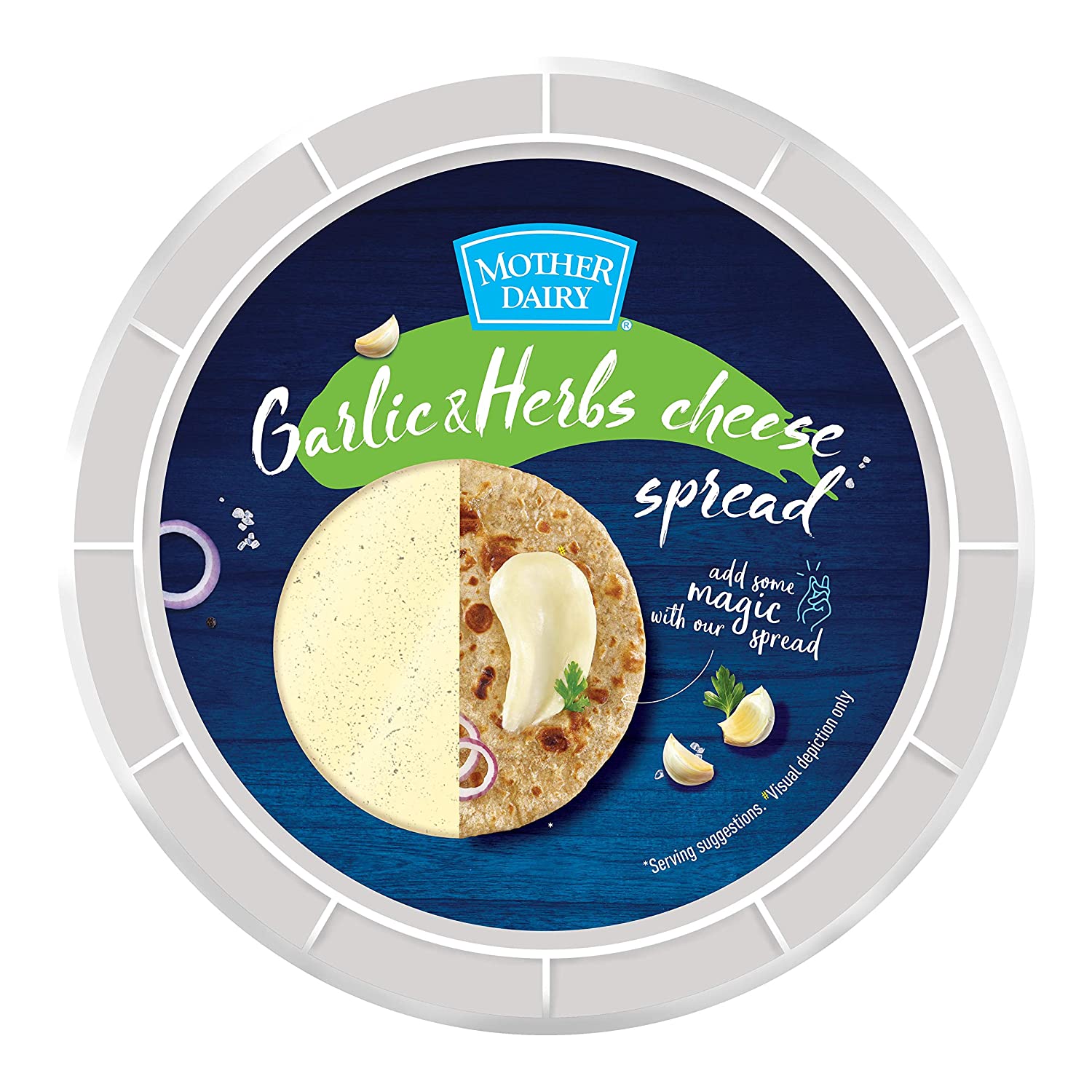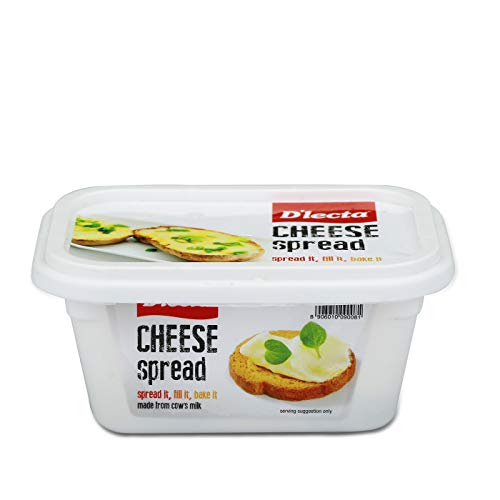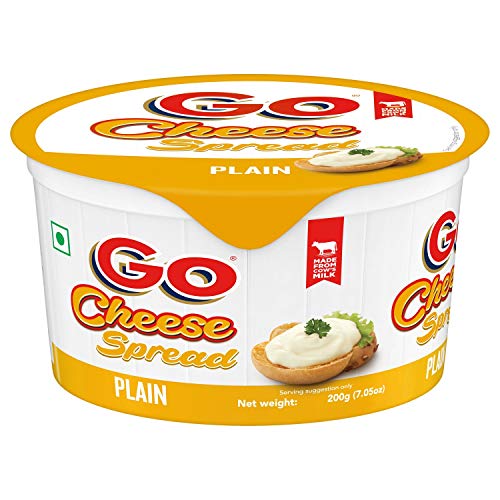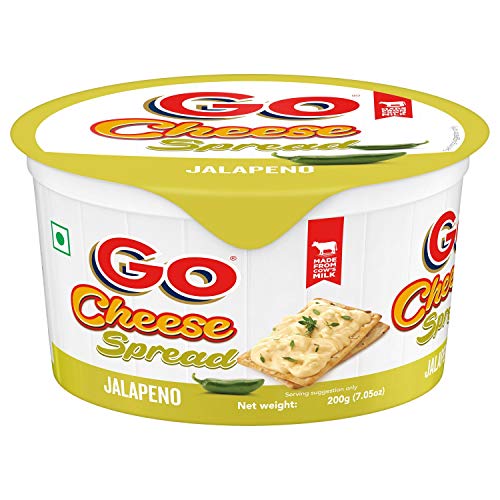Best Cheese Spreads
Be it on your toast or just as a dip, cheese spreads must be in every kitchen. Children love it, and it gives your mundane breakfast a quick and effortless tasty twist. We have listed out some of the best cheese spreads. Read below to know more about them.
1. Veeba Cheese and Chilli Sandwich Spread
These spreads contain 4% cheese, tomato paste, and red chilies that make it extremely delicious. You can use it for your sandwiches or even as a dip for snacks. It contains no trans fat and is 100% vegetarian. It comes in a plastic jar that is easy to store.
2. Mother Dairy Cheese Spread Garlic & Herbs
Mother dairy cheese spread has a soft, spreadable cheese texture. It contains garlic and herbs for great taste and flavour. The cheese spread is made using cow’s milk. You can apply this cheese spread on bread or roti for breakfast.
3. Amul Cheese Spread
This classic cheese spread is 100% vegetarian. It contains protein, almost 11.2 g per 100 g. It contains no added sugar and negligible amounts of trans fat. You can use it as a spread for your toasts or even in your sandwiches.
The cheese comes in a container, so it is easy to scoop out and use. Replace the plastic lid tightly after each use to prevent the cheese from spoiling.
4. Dlecta Cheese Spread
This creamy cheese has a versatile use and can be used to spread, make fillings, or even for baking. It is rich in protein as it is made from cow’s milk.
The cheese should be consumed within nine months from the date of manufacturing. It comes in a convenient container that is easy to use and store.
5. Go cheese spread plain
This creamy and soft cheddar cheese spread is made from cow’s milk. The cheese contains calcium and vitamin A. It has no added sugar and 0% daily value of carbohydrates. The cheese spread is 100% vegetarian. You should keep the spread refrigerated and consume within seven days of opening the pack.
6. Gowardhan Cheese Spread – Jalapeno
This cheddar cheese spread is made from cow’s milk, rich in calcium and vitamin A. It is soft and creamy with a spicy and tangy jalapeno flavor. The cheese contains 0% daily value of carbohydrates per 100 g and no added sugar. It is a completely vegetarian friendly. However, you should refrigerate it and consume it within seven days post opening the cheese spread box.
Buying Guide
Cow’s milk cheese
Cheese can be made from cow’s milk, goat’s milk, sheep’s milk, and buffalo’s milk. People usually prefer the cow’s milk cheese because of its taste and neutral flavor. However, many cheese lovers say the typical smell of goat’s cheese makes it more delicious. Unless otherwise mentioned, manufacturers mix different kinds of cheeses to get the desired flavor and texture.
If you would prefer cow’s milk cheese (which is more compatible with the Indian palate), then buy only those varieties that mention that it is cow’s milk cheese. Also, note that cheese made from cow’s milk has more calcium.
Lactose
Cheese made with cow’s milk contains lactose and hence is unsuitable for people with lactose intolerance. For people with lactose intolerance, goat’s milk cheese is a good alternative as it contains very little lactose, not enough to cause adverse reactions. However, if you would still prefer to play safe, soy milk cheese is the best option; it has no lactose trace whatsoever.
Fat
Cheese spread is often considered a good alternative to butter. This is because 100 g of butter has roughly 717 kcal, while cheese has less than half of the kilocalories and contains 349 kcal. This, of course, does not mean that cheese is fat-free. It contains saturated fat, which includes trans fat and cholesterol. Many of the cheese spread that you buy contain at least some trans fat (varies between 0.1 to 1.5 g per 100 g).
If you are supposed to be cutting down on your cholesterol for heart-related disorders, these processed cheese spreads should be avoided. People on a diet who feel cheese is better than butter should check the nutritional values before including it in their daily diet.
Emulsifiers and preservatives
The actual cheese content in cheese spreads is surprisingly low, as low as just 4% to 5%. Some of them may have even less cheese. The spread’s remaining part is filled with oil, milk, emulsifiers, preservatives, synthetic colors, synthetic flavors, and the occasional spices and condiments.
All these artificial ingredients that are added are bad for your health. It is best to use these readymade cheese spreads occasionally, instead of regularly.
Sugar
As cheese spreads are ready to eat, they contain spices, condiments, and sugar. Just 100 g of cheese spread can have 4 to 5 g of sugar. People with diabetes should be extra cautious when indulging in these spreads.
Allergens
Besides the obvious lactose intolerance (as it is made of milk), other ingredients like soy are added, which is also a common allergen. So if you have precedence of food allergy, then check the ingredients and rule out the possibility before buying a pack.
Sodium
Just like sugar, cheese spreads contain salt as well. Salt is the primary source of sodium. While sodium is important for us, it is required in very limited quantities. 2.3 to 3.5 g of sodium per day is good for you. In 100 g of cheese spread, there is 825 mg to 850 mg of sodium, which is rather high. Excess sodium not only interferes with your blood pressure but leads to water retention in the body.







